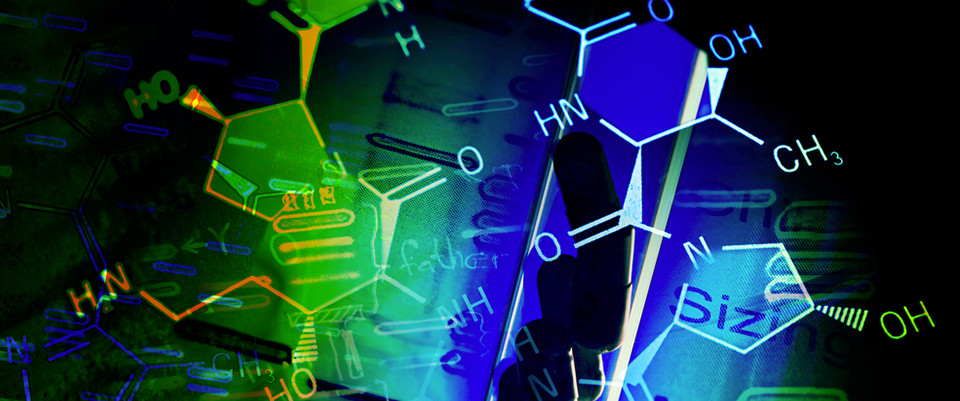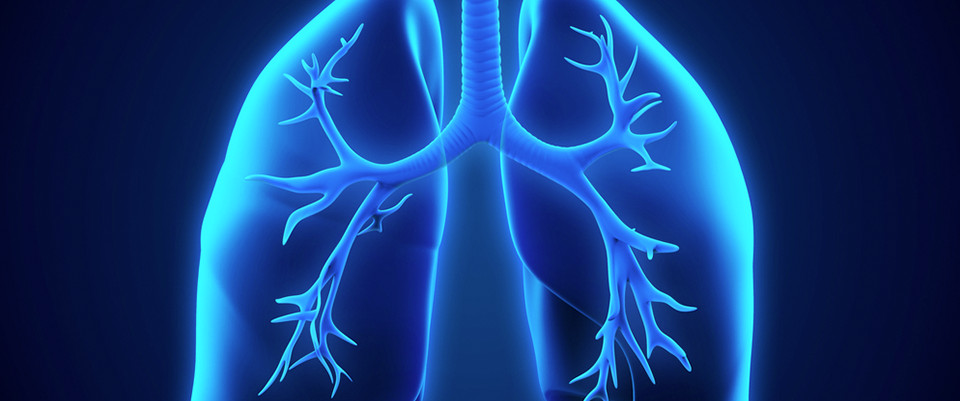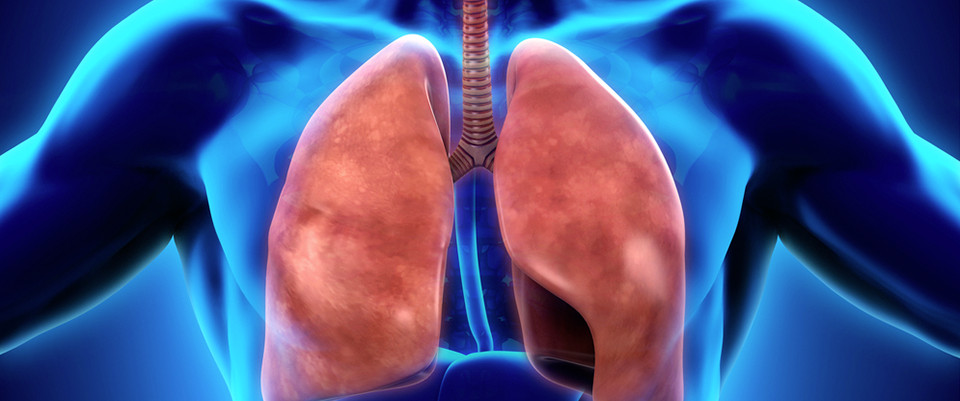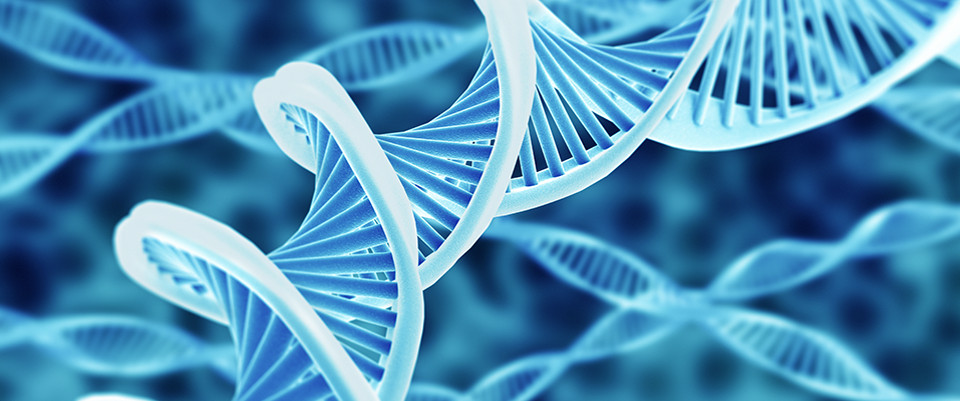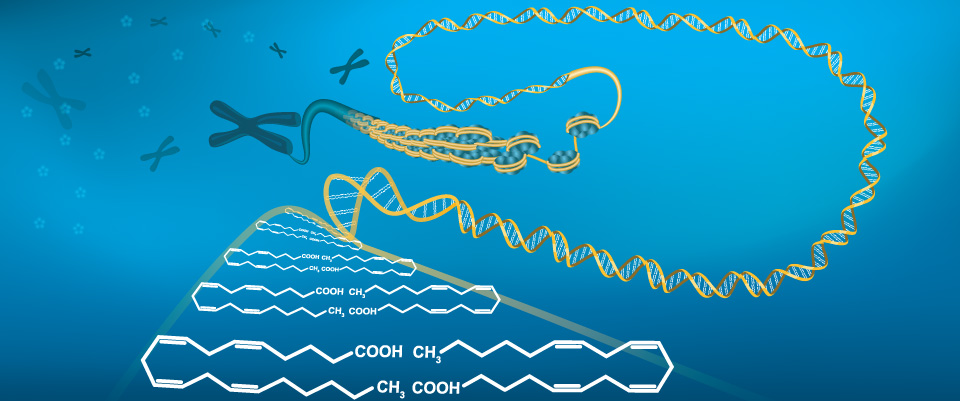PubMed
Age-related alterations in metabolome and microbiome provide insights in dietary transition in giant pandas
mSystems. 2023 Jun 5:e0025223. doi: 10.1128/msystems.00252-23. Online ahead of print.ABSTRACTWe conducted UPLC-MS-based metabolomics, 16S rRNA, and metagenome sequencing on the fecal samples of 44 captive giant pandas (Ailuropoda melanoleuca) from four age groups (i.e., Cub, Young, Adult, and Old) to comprehensively understand age-related changes in the metabolism and gut microbiota of giant pandas. We characterized the metabolite profiles of giant pandas based on 1,376 identified metabolites, with 152 significantly differential metabolites (SDMs) found across the age groups. We found that the metabolites and the composition/function of the gut microbiota changed in response to the transition from a milk-dominant diet in panda cubs to a bamboo-specific diet in young and adult pandas. Lipid metabolites such as choline and hippuric acid were enriched in the Cub group, and many plant secondary metabolites were significantly higher in the Young and Adult groups, while oxidative stress and inflammatory related metabolites were only found in the Old group. However, there was a decrease in the α-diversity of gut microbiota in adult and old pandas, who exclusively consume bamboo. The abundance of bacteria related to the digestion of cellulose-rich food, such as Firmicutes, Streptococcus, and Clostridium, significantly increased from the Cub to the Adult group, while the abundance of beneficial bacteria such as Faecalibacterium, Sarcina, and Blautia significantly decreased. Notably, several potential pathogenic bacteria had relatively high abundances, especially in the Young group. Metagenomic analysis identified 277 CAZyme genes including cellulose degrading genes, and seven of the CAZymes had abundances that significantly differed between age groups. We also identified 237 antibiotic resistance genes (ARGs) whose number and diversity increased with age. We also found a significant positive correlation between the abundance of bile acids and gut bacteria, especially Lactobacillus and Bifidobacterium. Our results from metabolome, 16S rRNA, and metagenome data highlight the important role of the gut microbiota-bile acid axis in the regulation of age-related metabolism and provide new insights into the lipid metabolism of giant pandas.IMPORTANCEThe giant panda is a member of the order Carnivora but is entirely herbivorous. The giant panda's specialized diet and related metabolic mechanisms have not been fully understood. It is therefore crucial to investigate the dynamic changes in metabolites as giant pandas grow and physiologically adapt to their herbivorous diet. This study conducted UPLC-MS-based metabolomics 16S rRNA, and metagenome sequencing on the fecal samples of captive giant pandas from four age groups. We found that metabolites and the composition/function of gut microbiota changed in response to the transition from a milk-dominant diet in cubs to a bamboo-specific diet in young and adult pandas. The metabolome, 16S rRNA, and metagenome results highlight that the gut microbiota-bile acid axis has an important role in the regulation of age-related metabolism, and our study provides new insights into the lipid metabolism of giant pandas.PMID:37273228 | DOI:10.1128/msystems.00252-23
Effects of Probiotic Enterococcus faecium from Yak on the Intestinal Microflora and Metabolomics of Mice with Salmonella Infection
Probiotics Antimicrob Proteins. 2023 Jun 5. doi: 10.1007/s12602-023-10102-5. Online ahead of print.ABSTRACTSalmonella spp. are pathogenic bacteria that cause diarrhea, abortion, and death in yak and severely harm livestock breeding. Therefore, it is vital to identify a probiotic that effectively antagonizes Salmonella. To the best of our knowledge, few prior studies have investigated the efficacy of Enterococcus faecium against Salmonella. Here, we evaluated the enteroprotective mechanism of E. faecium in a mouse Salmonella infection model using hematoxylin-eosin (H&E) staining, quantitative real-time polymerase chain reaction (Q-PCR) technology, microbial diversity sequencing, and metabonomics. Enterococcus faecium inhibited the proinflammatory cytokines IL-1β, IL-6, TNF-α, and IFN-γ and promoted the anti-inflammatory cytokine IL-10. The Firmicutes/Bacteroidota (F/B) ratio and the abundances of Firmicutes and Akkermansia were significantly higher in the E. faecium than in the Salmonella group. Metabonomics and microbial diversity sequencing disclosed five different metabolites with variable importance in the projection (VIP) > 3 that were characteristic of both the Salmonella and E. faecium groups. Combined omics revealed that Lactobacillus and Bacteroides were negatively and positively correlated, respectively, with cholic acid, while Desulfovibrio was positively correlated with lipids in both the control and Salmonella groups. Desulfovibrio was also positively correlated with lipids in both the Salmonella and E. faecium groups. Enterococcus faecium antagonizes Salmonella by normalizing the abundance of the intestinal microorganisms and modulating their metabolic pathways. Hence, it may efficaciously protect the host intestine against Salmonella infection.PMID:37273089 | DOI:10.1007/s12602-023-10102-5
Fecal metabonomics combined with 16S rDNA sequencing to analyze the changes of gut microbiota in rats fed with different protein source diets
Eur J Nutr. 2023 Jun 5. doi: 10.1007/s00394-023-03168-y. Online ahead of print.ABSTRACTPURPOSE: When blended, animal and plant proteins can complement each other in terms of amino acid composition and release time. In this study, we investigated whether the blended protein diet has a better feeding effect than the single protein diet, and to reveal the differences in growth and intestinal microbiota composition caused by the blended protein diet.METHODS: Forty Sprague Dawley (SD) rats received diets with different protein sources, including casein (C), whey protein (WP), black soybean protein (BSP), and black soybean-whey blended protein (BS-WP), for eight weeks. To investigate the effects of blended protein supplement on gut microbiota and metabolites, we performed a high throughput 16S rDNA sequencing and fecal metabolomics profiling. In addition, we determined growth and serum biochemical indices, and conducted intestinal morphology analyses.RESULTS: Compared to those in the BSP and WP groups, the daily body weight gain and feed conversion efficiency increased in the BS-WP group. Serum biochemical indices indicated that the protein utilization efficiency of the WP and BS-WP groups was relatively high, and the BS-WP blended protein diet improved the protein adoption rate. The BS-WP blended protein diet also improved intestinal tissue morphology and promoted intestinal villi development compared to the single protein diets. Furthermore, dietary protein altered the composition of gut microbiota, the gut microbial diversity of rats fed with the BS-WP diet was significantly (P < 0.05) higher than that of the other groups. The difference in dietary protein corresponded with an alteration of fecal amino acids and their metabolites, and tryptophan and tyrosine metabolism were the key mechanisms leading to the changes in fecal microbial composition.CONCLUSION: Dietary protein sources played an important role in the growth and development of rats by influencing intestinal metabolism and microbial composition. The BS-WP blended protein diet was more conducive to nutrient absorption than the single protein diet. Furthermore, blended protein increased the diversity of intestinal microbes and aided the establishment of intestinal barrier function.PMID:37273002 | DOI:10.1007/s00394-023-03168-y
Characterisation of acetogen formatotrophic potential using Eubacterium limosum
Appl Microbiol Biotechnol. 2023 Jun 5. doi: 10.1007/s00253-023-12600-6. Online ahead of print.ABSTRACTFormate is a promising energy carrier that could be used to transport renewable electricity. Some acetogenic bacteria, such as Eubacterium limosum, have the native ability to utilise formate as a sole substrate for growth, which has sparked interest in the biotechnology industry. However, formatotrophic metabolism in E. limosum is poorly understood, and a system-level characterisation in continuous cultures is yet to be reported. Here, we present the first steady-state dataset for E. limosum formatotrophic growth. At a defined dilution rate of 0.4 d-1, there was a high specific uptake rate of formate (280 ± 56 mmol/gDCW/d; gDCW = gramme dry cell weight); however, most carbon went to CO2 (150 ± 11 mmol/gDCW/d). Compared to methylotrophic growth, protein differential expression data and intracellular metabolomics revealed several key features of formate metabolism. Upregulation of phosphotransacetylase (Pta) appears to be a futile attempt of cells to produce acetate as the major product. Instead, a cellular energy limitation resulted in the accumulation of intracellular pyruvate and upregulation of pyruvate formate ligase (Pfl) to convert formate to pyruvate. Therefore, metabolism is controlled, at least partially, at the protein expression level, an unusual feature for an acetogen. We anticipate that formate could be an important one-carbon substrate for acetogens to produce chemicals rich in pyruvate, a metabolite generally in low abundance during syngas growth. KEY POINTS: First Eubacterium limosum steady-state formatotrophic growth omics dataset High formate specific uptake rate, however carbon dioxide was the major product Formate may be the cause of intracellular stress and biofilm formation.PMID:37272938 | DOI:10.1007/s00253-023-12600-6
Genomic analysis of <em>Kazachstania aerobia</em> and <em>Kazachstania servazzii</em> reveals duplication of genes related to acetate ester production
Microb Genom. 2023 Jun;9(6). doi: 10.1099/mgen.0.001029.ABSTRACTKazachstania aerobia and Kazachstania servazzii can affect wine aroma by increasing acetate ester concentrations, most remarkably phenylethyl acetate and isoamyl acetate. The genetic basis of this is unknown, there being little to no sequence data available on the genome architecture. We report for the first time the near-complete genome sequence of the two species using long-read (PacBio) sequencing (K. aerobia 20 contigs, one scaffold; and K. servazzii 22 contigs, one scaffold). The annotated genomes of K. aerobia (12.5 Mb) and K. servazzii (12.3 Mb) were compared to Saccharomyces cerevisiae genomes (laboratory strain S288C and wine strain EC1118). Whilst a comparison of the two Kazachstania spp. genomes revealed few differences between them, divergence was evident in relation to the genes involved in ester biosynthesis, for which gene duplications or absences were apparent. The annotations of these genomes are valuable resources for future research into the evolutionary biology of Kazachstania and other yeast species (comparative genomics) as well as understanding the metabolic processes associated with alcoholic fermentation and the production of secondary 'aromatic' metabolites (transcriptomics, proteomics and metabolomics).PMID:37272916 | DOI:10.1099/mgen.0.001029
The oxoglutarate dehydrogenase complex is involved in myofibril growth and Z-disc assembly in Drosophila
J Cell Sci. 2023 Jun 5:jcs.260717. doi: 10.1242/jcs.260717. Online ahead of print.ABSTRACTMyofibrils are long intracellular cables specific to muscles, composed mainly of actin and myosin filaments. The actin and myosin filaments are organized into repeated units called sarcomeres, which form the myofibrils. Muscle contraction is achieved by the simultaneous shortening of sarcomeres, which requires all sarcomeres to be the same size. Muscles have a variety of ways to ensure sarcomere homogeneity. We previously showed that the controlled oligomerization of Zasp proteins sets the diameter of the myofibril. Here we looked for Zasp-binding proteins at the Z-disc to identify additional proteins coordinating myofibril growth and assembly. We found that the E1 subunit of the oxoglutarate dehydrogenase complex localizes to both the Z-disc and the mitochondria, and is recruited to the Z-disc by Zasp52. The three subunits of the oxoglutarate dehydrogenase complex are required for myofibril formation. Using super-resolution microscopy, we revealed the overall organization of the complex at the Z-disc. Metabolomics identified an amino acid imbalance affecting protein synthesis as a possible cause of myofibril defects, which is supported by OGDH-dependent localization of ribosomes at the Z-disc.PMID:37272588 | DOI:10.1242/jcs.260717
Metabolic changes associated with dark-induced leaf senescence in Arabidopsis <em>nadk2</em> mutants
Plant Signal Behav. 2023 Dec 31;18(1):2215618. doi: 10.1080/15592324.2023.2215618.ABSTRACTArabidopsis NADK2 (NAD kinase 2) is a chloroplast-localized enzyme involved in NADP+ synthesis, which acts as the final electron acceptor in the photosynthetic electron transfer chain. The NADK2-deficient mutant (nadk2) was used to analyze the effect of NAD(P)(H) unbalance in the dark-induced leaf senescence. During senescence, WT plants and nadk2 mutants showed a similar reduction in chlorophyll content. NAD(P)(H) quantification showed that the amount of total NAD(P)(H) decreased on the day 7 in WT but on the day 3 in nadk2. The phosphorylation ratio (i.e. NADP(H)/NAD(H)) decreased on day 1 in WT. In contrast, the nadk2 showed lower phosphorylation ratio at 0 day and no change throughout the aging process. Metabolome analysis showed that the metabolic profiles of both WT plants and nadk2 mutants subjected to dark-induced senescence adopted similar patterns as the senescence progressed. However, the changes in individual metabolites in the nadk2 mutants were different from those of the WT during dark-induced senescence.PMID:37272565 | DOI:10.1080/15592324.2023.2215618
Decreased metabolic diversity in common beans associated with domestication revealed by untargeted metabolomics, information theory, and molecular networking
Plant J. 2023 Jun 5. doi: 10.1111/tpj.16277. Online ahead of print.ABSTRACTThe process of crop domestication leads to a dramatic reduction in the gene expression associated with metabolic diversity. Genes involved in specialized metabolism appear to be particularly affected. Although there is ample evidence of these effects at the genetic level, a reduction in diversity at the metabolite level has been taken for granted despite having never been adequately accessed and quantified. Here we leveraged the high coverage of ultra high performance liquid chromatography-high-resolution mass spectrometry based metabolomics to investigate the metabolic diversity in the common bean (Phaseolus vulgaris). Information theory highlights a shift towards lower metabolic diversity and specialization when comparing wild and domesticated bean accessions. Moreover, molecular networking approaches facilitated a broader metabolite annotation than achieved to date, and its integration with gene expression data uncovers a metabolic shift from specialized metabolism towards central metabolism upon domestication of this crop.PMID:37272491 | DOI:10.1111/tpj.16277
Precision fermentation with mass spectrometry-based spent media analysis
Biotechnol Bioeng. 2023 Jun 5. doi: 10.1002/bit.28450. Online ahead of print.ABSTRACTOptimization and monitoring of bioprocesses requires the measurement of several process parameters and quality attributes. Mass spectrometry (MS)-based techniques such as those coupled to gas chromatography (GCMS) and liquid Chromatography (LCMS) enable the simultaneous measurement of hundreds of metabolites with high sensitivity. When applied to spent media, such metabolome analysis can help determine the sequence of substrate uptake and metabolite secretion, consequently facilitating better design of initial media and feeding strategy. Furthermore, the analysis of metabolite diversity and abundance from spent media will aid the determination of metabolic phases of the culture and the identification of metabolites as surrogate markers for product titer and quality. This review covers the recent advances in metabolomics analysis applied to the development and monitoring of bioprocesses. In this regard, we recommend a stepwise workflow and guidelines that a bioprocesses engineer can adopt to develop and optimize a fermentation process using spent media analysis. Finally, we show examples of how the use of MS can revolutionize the design and monitoring of bioprocesses.PMID:37272489 | DOI:10.1002/bit.28450
Correction to 'Illuminating the dark metabolome of Pseudo-nitzschia-microbiome associations'
Environ Microbiol. 2023 Jun 5. doi: 10.1111/1462-2920.16433. Online ahead of print.NO ABSTRACTPMID:37272427 | DOI:10.1111/1462-2920.16433
Asiatic acid ameliorates rifampicin and isoniazid-induced liver injury in vivo by regulating sphingolipid metabolism and mitogen-activated protein kinase signaling pathways
Basic Clin Pharmacol Toxicol. 2023 Jun 5. doi: 10.1111/bcpt.13909. Online ahead of print.ABSTRACTIn this study, we aimed to determine whether asiatic acid (AA) exerts any therapeutic effects on rifampicin (RFP)-and isoniazid (INH)-induced liver injury and elucidate the underlying mechanisms. Briefly, liver injury in mice was induced via RFP and INH administration. We investigated the effects and potential action mechanisms of AA on liver injury using transcriptomics, metabolomics, and various examinations. We found that AA significantly ameliorated the pathological changes in liver tissues and decreased the transaminase activity, inflammation, and oxidative stress damage. Transcriptomics revealed 147 differentially expressed genes (DEGs) between the AA and model groups that were enriched in metabolic and mitogen-activated protein kinase (MAPK) signaling pathways. Metabolomics revealed 778 differentially expressed metabolites between the AA and model groups. Furthermore, integrated transcriptomics and metabolomics analyses revealed strong correlations between DEGs and differentially expressed metabolites and indicated that AA regulates the sphingolipid metabolism by inhibiting the expression of delta 4-desaturase, sphingolipid 1. Experimental results confirmed that AA inhibited the MAPK signaling pathway. In summary, AA inhibits inflammation and oxidative stress damage by regulating sphingolipid metabolism pathway and blocking the MAPK signaling pathway, thereby relieving the RFP/INH-induced liver injury.PMID:37272388 | DOI:10.1111/bcpt.13909
Distinct global metabolomic profiles of the model organism <em>Caenorhabditis elegans</em> during interactions with <em>Staphylococcus aureus</em> and <em>Salmonella enterica</em> Serovar Typhi
Mol Omics. 2023 Jun 5. doi: 10.1039/d3mo00040k. Online ahead of print.ABSTRACTThe interactive network of hosts with pathogenic microbes is still questionable. It has been hypothesized and reported that the host shows altered regulatory mechanisms for different pathogens. Several studies using transcriptomics and proteomics revealed the altered pathways and sequential regulations displayed by the host during bacterial interactions. Still, there is a gap in understanding the triggering molecule at transcriptomic and proteomic levels due to the lack of the knowledge of the interactive metabolites produced during their interactions. In this study, the global metabolomic approach was performed in the nematode model organism Caenorhabditis elegans upon exposure to a Gram-negative bacteria, Salmonella enterica Serovar Typhi, and a Gram-positive bacteria, Staphylococcus aureus, and the whole metabolome was categorized as endo-metabolome (internally produced) and exo-metabolome (externally releasing). The extracted metabolites were subjected to liquid chromatography mass spectrometry (ESI-LC/qToF-MS/MS). In total 5578, 4554 and 4046 endo-metabolites and 4451, 3625 and 1281 exo-metabolites were identified in C. elegans when exposed to E. coli OP50, S. Typhi and S. aureus, respectively. Both the multivariate and univariate analyses were performed. The variation in endo- and exo-metabolome during candidate bacterial interactions was observed. The results indicated that, during S. aureus interaction, the exclusively enriched metabolites were significantly involved in alpha-linoleic acid metabolism. Similarly, the exclusively enriched metabolites during the interaction of S. Typhi were significantly involved in the phosphatidylinositol signalling system. The whole metabolomic profile presented here will build the scope to understand the role of metabolites and the respective pathways in host response during the early period of bacterial infections.PMID:37272185 | DOI:10.1039/d3mo00040k
Plasma metabolomics identifies metabolic alterations associated with the growth and development of cat
Animal Model Exp Med. 2023 Jun 4. doi: 10.1002/ame2.12328. Online ahead of print.ABSTRACTBACKGROUND: The purpose of our study was to study the composition and content of the feline plasma metabolome revealing the critical metabolites and metabolic pathways associated with age during growth and development.METHODS: Blood samples were collected from juvenile and adult groups for blood routine tests and serum biochemistry tests. Non-targeted metabolomics analyses of plasma were also performed to investigate changes in metabolites and metabolic pathways.RESULTS: In this study, we found that the red blood cell counts, liver function indexes (albumin and gamma-glutamyl transpeptidase), and the concentration of triglyceride and glucose changed significant with growth and development. The metabolomics results revealed that 1427 metabolites were identified in the plasma of young and adult cats. Most of these metabolites belong to major classes of lipids and lipid-like molecules. The most obvious age-related metabolites include reduced levels of chenodeoxycholate, taurocholate, cholate, and taurochenodeoxycholate but increased levels of L-cysteine and taurocyamine in the adult cat's serum. These metabolites are mainly involved in the primary bile acid biosynthesis pathway, the bile secretion pathway, and the taurine and hypotaurine metabolism pathway.CONCLUSION: This study revealed many age-related metabolite alterations in the feline plasma. These age-varying metabolites, especially in the bile acid biosynthesis and secretion metabolism pathways, indicate that the regulation of these pathways is involved in the growth and development of cats. This study promotes our understanding of the mechanism of feline growth and provides new insights into nutrition and medicine for cats of different ages.PMID:37271879 | DOI:10.1002/ame2.12328
Metabolomic Profile of the Healthy Eating Index-2015 in the Multi-Ethnic Study of Atherosclerosis
J Nutr. 2023 Jun 2:S0022-3166(23)72201-3. doi: 10.1016/j.tjnut.2023.05.030. Online ahead of print.ABSTRACTINTRODUCTION: Poor diet quality is a risk factor for type 2 diabetes and cardiovascular disease. However, knowledge of metabolites marking adherence to Dietary Guidelines for Americans (2015 version; DGA-15) are limited. The goal was to determine a pattern of metabolites associated with the Healthy Eating Index-2015 (HEI-2015), which measures adherence to the DGA.METHODS: The analysis examined 3557 adult men and women from the longitudinal cohort Multi-Ethnic Study of Atherosclerosis (MESA), without known cardiovascular disease and with complete dietary data. Fasting serum specimens, diet and demographic questionnaires were assessed at baseline. Untargeted 1H NMR 1DNMR spectroscopy (600 MHz) was used to generate metabolomics and lipidomics. A metabolome-wide association study (MWAS) specified each spectral feature as outcomes, HEI-2015 score as predictor, adjusting for age, gender, race, and study site in linear regression analyses. Subsequently, hierarchical clustering defined discrete groups of correlated NMR features associated with named metabolites and linear regression analysis assessed for associations with HEI-2015 total and component scores.RESULTS: The sample included 50% women with average age of 63 years, with 40% identifying as White, 23% Black, 24% Hispanic and 13% Chinese American. The average HEI-2015 score was 66. MWAS identified 179 spectral features significantly associated with HEI-2015 score. Cluster analysis identified seven clusters representing 4 metabolites; HEI-2015 score was significantly associated with all. HEI-2015 score was associated with proline betaine (ß 0.12 [0.02]; p=4.70 E-13) and was inversely related to proline (ß -0.13 [0.02]; p=4.45 E-14), 1,5 anhydrosorbitol (ß -0.08 [0.02]; p=4.37 E-07) and unsaturated fatty acyl chains (ß 0.08 [0.02]; p=8.98 E-07). Intake of total fruit, whole grains and seafood and plant proteins was associated with proline betaine.CONCLUSIONS: Diet quality was significantly associated with unsaturated fatty acyl chains, proline betaine, proline. Further analysis may clarify the link between diet quality, metabolites, and pathogenesis of cardiometabolic disease.PMID:37271414 | DOI:10.1016/j.tjnut.2023.05.030
Effects of Aeromonas hydrophila infection on the intestinal microbiota, transcriptome, and metabolomic of common carp (Cyprinus carpio)
Fish Shellfish Immunol. 2023 Jun 2:108876. doi: 10.1016/j.fsi.2023.108876. Online ahead of print.ABSTRACTAeromonas hydrophila frequently has harmful effects on aquatic organisms. The intestine is an important defense against stress. In this study, we investigated the intestinal microbiota and transcriptomic and metabolomic responses of Cyprinus carpio subjected to A. hydrophila infection. The results showed that obvious variation in the intestinal microbiota was observed after infection, with increased levels of Firmicutes and Bacteroidetes and decreased levels of Proteobacteria. Several genera of putatively beneficial microbiota (Cetobacterium, Bacteroides, and Lactobacillus) were abundant, while Demequina, Roseomonas, Rhodobacter, Pseudoxanthomonas, and Cellvibrio were decreased; pathogenic bacteria of the genus Vibrio were increased after microbiota infection. The intestinal transcriptome revealed several immune-related differentially expressed genes associated with the cytokines and oxidative stress. The metabolomic analysis showed that microbiota infection disturbed the metabolic processes of the carp, particularly amino acid metabolism. This study provides insight into the underlying mechanisms associated with the intestinal microbiota, immunity, and metabolism of carp response to A. hydrophila infection; eleven stress-related metabolite markers were identified, including N-acetylglutamic acid, capsidiol, sedoheptulose 7-phosphate, prostaglandin B1, 8,9-DiHETrE, 12,13-DHOME, ADP, cellobiose, 1H-Indole-3-carboxaldehyde, sinapic acid and 5,7-dihydroxyflavone.PMID:37271325 | DOI:10.1016/j.fsi.2023.108876
Asthma-protective agents in dust from traditional farm environments
J Allergy Clin Immunol. 2023 Jun 2:S0091-6749(23)00706-6. doi: 10.1016/j.jaci.2023.05.013. Online ahead of print.ABSTRACTBACKGROUND: Growing up on traditional European, and U.S. Amish, dairy farms, in close contact with cows and hay, protects children against asthma, and airway administration of extracts from dust collected from cowsheds of those farms prevents allergic asthma in mice.OBJECTIVES: This study sought to begin identifying farm-derived asthma-protective agents.METHODS: Our work unfolded along two unbiased, independent but complementary discovery paths. Dust extracts from protective and non-protective farms (European and Amish cowsheds vs. European sheep sheds) were analyzed by comparative nuclear magnetic resonance fingerprinting and differential proteomics. Bioactivity-guided size fractionation focused on protective Amish cowshed dust extracts. Multiple in vitro and in vivo functional assays were used in both paths. Some of the proteins thus identified were characterized by in-solution and in-gel SDS-PAGE enzymatic digestion/peptide mapping followed by liquid chromatography/mass spectrometry. The cargo carried by these proteins was analyzed by untargeted liquid chromatography-high resolution mass spectrometry.RESULTS: Twelve carrier proteins of animal and plant origin, including the bovine lipocalins Bos d2 and odorant binding protein, were enriched in dust extracts from protective European cowsheds. A potent asthma-protective fraction of Amish cowshed dust extracts (≈0.5% of the total carbon content of unfractionated extracts) contained seven animal and plant proteins, including Bos d2 and odorant binding protein loaded with fatty acid metabolites from plants, bacteria and fungi.CONCLUSIONS: Animals and plants from traditional farms produce proteins that transport hydrophobic microbial and plant metabolites. When delivered to mucosal surfaces, these agents might regulate airway responses.PMID:37271318 | DOI:10.1016/j.jaci.2023.05.013
The acute effect of different NAD<sup>+</sup> precursors included in the combined metabolic activators
Free Radic Biol Med. 2023 Jun 2:S0891-5849(23)00473-2. doi: 10.1016/j.freeradbiomed.2023.05.032. Online ahead of print.ABSTRACTNAD+ and glutathione precursors are currently used as metabolic modulators for improving the metabolic conditions associated with various human diseases, including non-alcoholic fatty liver disease, neurodegenerative diseases, mitochondrial myopathy, and age-induced diabetes. Here, we performed a one-day double blinded, placebo-controlled human clinical study to assess the safety and acute effects of six different Combined Metabolic Activators (CMAs) with 1 g of different NAD+ precursors based on global metabolomics analysis. Our integrative analysis showed that the NAD+ salvage pathway is the main source for boosting the NAD+ levels with the administration of CMAs without NAD+ precursors. We observed that incorporation of nicotinamide (Nam) in the CMAs can boost the NAD+ products, followed by niacin (NA), nicotinamide riboside (NR) and nicotinamide mononucleotide (NMN), but not flush free niacin (FFN). In addition, the NA administration led to a flushing reaction, accompanied by decreased phospholipids and increased bilirubin and bilirubin derivatives, which could be potentially risky. In conclusion, this study provided a plasma metabolomic landscape of different CMA formulations, and proposed that CMAs with Nam, NMN as well as NR can be administered for boosting NAD+ levels to improve altered metabolic conditions.PMID:37271226 | DOI:10.1016/j.freeradbiomed.2023.05.032
Low-polarity untargeted metabolomic profiling as a tool to gain insight into seminal fluid
Metabolomics. 2023 Jun 5;19(6):53. doi: 10.1007/s11306-023-02020-y.ABSTRACTINTRODUCTION: A decrease in sperm cell count has been observed along the last several decades, especially in the most developed regions of the world. The use of metabolomics to study the composition of the seminal fluid is a promising approach to gain access to the molecular mechanisms underlying this fact.OBJECTIVES: In the present work, we aimed at relating metabolomic profiles of young healthy men to their semen quality parameters obtained from conventional microscopic analysis.METHODS: An untargeted metabolomics approach focusing on low- to mid-polarity compounds was used to analyze a subset of seminal fluid samples from a cohort of over 2700 young healthy men.RESULTS: Our results show that a broad metabolic profiling comprising several families of compounds (including acyl-carnitines, steroids, and other lipids) can contribute to effectively distinguish samples provided by individuals exhibiting low or high absolute sperm counts.CONCLUSION: A number of metabolites involved in sexual development and function, signaling, and energy metabolism were highlighted as being distinctive of samples coming from either group, proving untargeted metabolomics as a promising tool to better understand the pathophysiological processes responsible for male fertility impairment.PMID:37271779 | DOI:10.1007/s11306-023-02020-y
Targeted metabolomic analysis in Parkinson's disease brain frontal cortex and putamen with relation to cognitive impairment
NPJ Parkinsons Dis. 2023 Jun 3;9(1):84. doi: 10.1038/s41531-023-00531-y.ABSTRACTWe performed liquid chromatography tandem mass spectrometry analysis with the targeted metabolomic kit Biocrates MxP Quant 500, in human brain cortex (Brodmann area 9) and putamen, to reveal metabolic changes characteristic of Parkinson's disease (PD) and PD-related cognitive decline. This case-control study involved 101 subjects (33 PD without dementia, 32 PD with dementia (cortex only), 36 controls). We found changes associated with PD, cognitive status, levodopa levels, and disease progression. The affected pathways include neurotransmitters, bile acids, homocysteine metabolism, amino acids, TCA cycle, polyamines, β-alanine metabolism, fatty acids, acylcarnitines, ceramides, phosphatidylcholines, and several microbiome-derived metabolites. Previously reported levodopa-related homocysteine accumulation in cortex still best explains the dementia status in PD, which can be modified by dietary supplementation. Further investigation is needed to reveal the exact mechanisms behind this pathological change.PMID:37270646 | DOI:10.1038/s41531-023-00531-y
Bacteriophage targeting microbiota alleviates non-alcoholic fatty liver disease induced by high alcohol-producing Klebsiella pneumoniae
Nat Commun. 2023 Jun 3;14(1):3215. doi: 10.1038/s41467-023-39028-w.ABSTRACTOur previous studies have shown that high alcohol-producing Klebsiella pneumoniae (HiAlc Kpn) in the intestinal microbiome could be one of the causes of non-alcoholic fatty liver disease (NAFLD). Considering antimicrobial resistance of K. pneumoniae and dysbacteriosis caused by antibiotics, phage therapy might have potential in treatment of HiAlc Kpn-induced NAFLD, because of the specificity targeting the bacteria. Here, we clarified the effectiveness of phage therapy in male mice with HiAlc Kpn-induced steatohepatitis. Comprehensive investigations including transcriptomes and metabolomes revealed that treatment with HiAlc Kpn-specific phage was able to alleviate steatohepatitis caused by HiAlc Kpn, including hepatic dysfunction and expression of cytokines and lipogenic genes. In contrast, such treatment did not cause significantly pathological changes, either in functions of liver and kidney, or in components of gut microbiota. In addition to reducing alcohol attack, phage therapy also regulated inflammation, and lipid and carbohydrate metabolism. Our data suggest that phage therapy targeting gut microbiota is an alternative to antibiotics, with potential efficacy and safety, at least in HiAlc Kpn-caused NAFLD.PMID:37270557 | DOI:10.1038/s41467-023-39028-w

